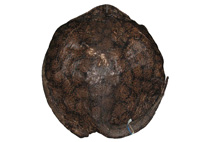Abstract
The Neotropical freshwater stingray Potamotrygom orbignyi (Castelnau, 1855), and other similar "reticulated" species occurring in northern South American basins, were submitted to a thorough taxonomic analysis based on an extensive external and internal morphological study. The identity of P. orbignyi and the taxonomic status of the related nominal species Potamotrygon dumerilii (Castelnau, 1855), Potamotrygon reticulata (Günther, 1880), and Potamotrygon humerosa Garman, 1913, are defined. Taxonomic and morphological analyses revealed that P. reticulata and P. dumerilii fall within the range of variation found in P. orbignyi and were consequently treated as junior synonyms, corroborating previous works. The extensive variation in coloration observed in P. orbignyi could not be divided into consistent morphotypes; P. orbignyi is therefore a widespread species in the upper, mid and lower Amazonas basin, the Orinoco drainage, and in rivers of Suriname and the Guianas. Additionally, P. humerosa and Potamotrygon marinae Deynat, 2007 were found to present characters that support their validity, and are redescribed based on newly collected material. Potamotrygon humerosa occurs predominantly in the mid and lower Amazonas River and in lower reaches of many of its affluents, whereas P. marinae is known only from French Guiana and Suriname. Characters that proved valuable as diagnostic indicators, either in combination or as derived features, are primarily from coloration, dermal denticles and spines (morphology, development and distribution), meristic features (e.g. numbers of tooth rows, vertebrae and mesopterygial radials), morphometric proportions (e.g. snout length, tail width at base and length), and size at sexual maturity.

